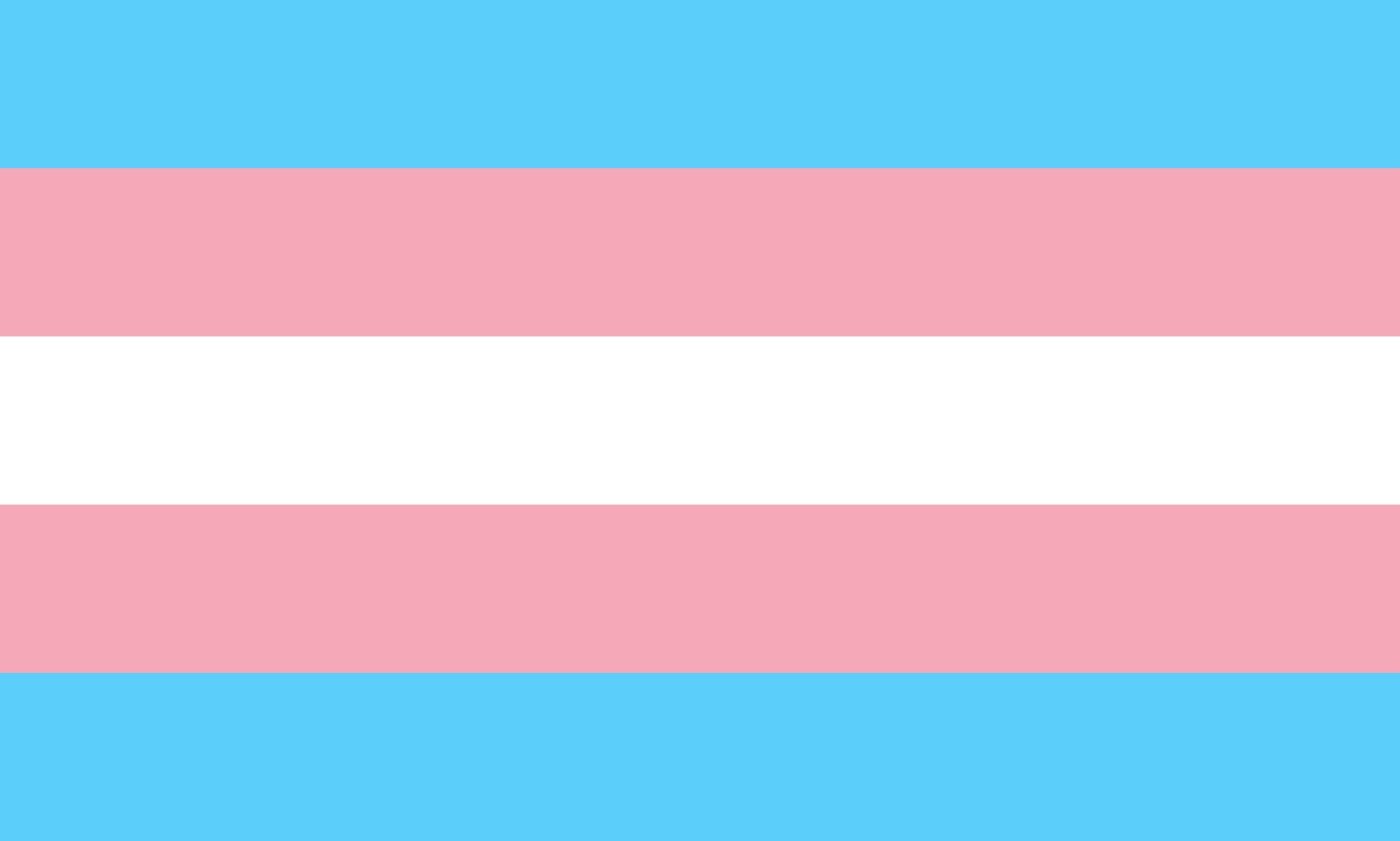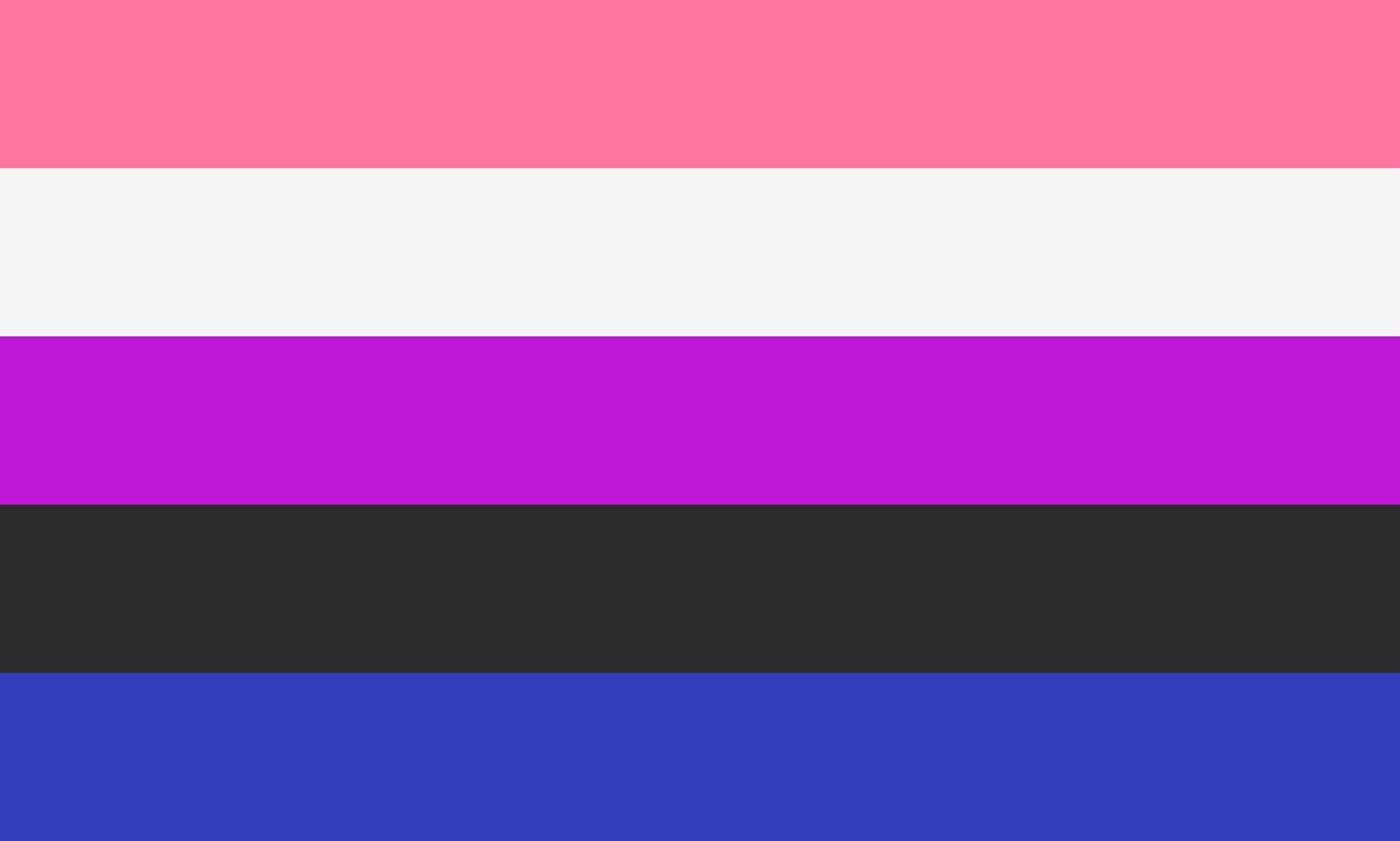Transgender & Gender Non-Conforming Flag Quiz
Here are the answers to our Transgender Awareness Week 2021 flag quiz. How many did you get right?
Flag 1
This is the Transgender Flag and it was designed by Monica Helms, an openly transgender woman in 1999. It is a term referring to an individual whose gender identity does not correspond with the AGAB – or assigned gender at birth.
Light blue and light pink as the traditional colours for boys and girls respectively; while the white represents people that are transitioning, gender neutral, intersex or have an undefined gender. The opposite of Transgender is Cisgender.
Flag 2
This is the Nonbinary Flag designed by Kye Rowan in 2014. It refers to someone whose gender does not fall strictly within the category of the binary genders of male or female. Some non-binary people may call themselves ‘enbies’ or ‘borls’ (equivalent to boys or girls) or ‘enben’ (equivalent to men or women). Whilst non-binary is included in the umbrella of transgender, some non-binary people choose not to identify as transgender.
The yellow stripe represents people whose gender exists outside of the binary, the white stripe, people with many or all genders, the purple, people with genders considered a mix of male and female, and the black people who identify as not having a gender.
Flag 3
This is the Demiboy Flag designed by Tumblr user Transrants in 2015. It is a non-binary gender in which one is partially, but not fully a boy or man.
There are no confirmed colour meanings, but it is assumed that the greys represent a partial connection, the blue represents masculinity and the white represents agender or non-binary identities.
Flag 4
This is the Demigirl Flag designed by Tumblr user Transrants in 2015. It is a non-binary gender in which one is partially, but not fully a girl or woman.
There are no confirmed colour meanings, but it is assumed that the greys represent a partial connection, the pink represents feminity and the white represents agender or non-binary identities.
Flag 5
This is the Agender Flag created by a Tumblr user called Salem X in 2014, has seven horizontal stripes. It is used to describe someone that entirely lacks a gender. It is one of the non-binary flags. They may identify most strongly as an individual, rather than as any given gender.
The black and white stripes represent the complete absence of gender. The grey represents semi-gender and the green stripe represents non-binary genders.
Flag 6
This is the Genderfluid Flag designed by Tumblr user JJ Poole in 2012. It refers to someone whose gender identity changes over time. A gender fluid individual can identify as any gender or combination of genders at any time.
The flag has five horizontal stripes: pink for femininity, blue for masculinity, purple for both masculinity and femininity, black for the lack of gender, and white for all genders.
Flag 7
This is the Genderqueer flag designed by Marilyn Roxie in 2011. It is iused to describe individuals who feel that they have a queer or non-normative experience with gender through gender identity, gender presentation or other experiences of gender.
Lavender is a mixture of blue and pink, the traditional colours associated with boys and girls on the Transgender Flag and it is meant to represent androgynes and adronogy. It also represents the “queer” in genderqueer, with lavender long being associated with queerness. White is meant to represent agender identity, similar to the gender-neutral white of the Transgender flag. The dark chartreuse green is meant to represent those whose identities are defined as outside of and without reference to binary.
Flag 8
This is the Polygender or Multigender Flag. It is a term for someone who experiences two or more genders. It falls under the non-binary and transgender umbrella terms.
Blue and pink represents masculinty and feminity respectively, or those that feel partially male/female. Yellow is for genders outside of the binary. Black is for those who feel partially agender. Grey is for those who gender can change or fluctuate.








